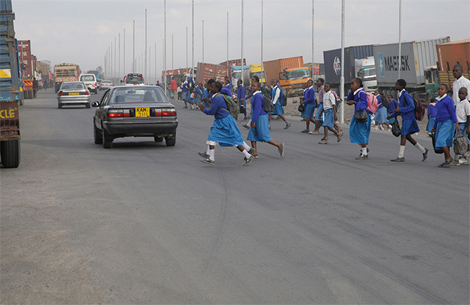
Ten strategies for protecting children
The report, ‘Ten Strategies for Keeping Children Safe on the Road’ is published today in advance of the 3rd UN Global Road Safety Week on May 4-11. The FIA Foundation provided a financial contribution to enable the development and production of the report by WHO as part of our support for the global #SaveKidsLives campaign which is calling for road safety to be included in the new Sustainable Development Goals and an emphasis on making roads safe for children.
The report warns that a “shift in mind set is desperately needed to ensure that roads everywhere serve the needs of and are safe for all who use them, including children, but also other vulnerable groups such as pedestrians, cyclists and motorcyclists. Such a change is imperative for ongoing efforts to promote healthy lifestyles. The walking, cycling and other physical activity that would do much to curb overweight and obesity in children will inevitably bring them into contact with the road. It is only if those roads are made safe that children will be inclined to use them and their parents and other caregivers will allow them to do so.”
Pointing out that more than 180,000 children under the age of 18 are killed every year, with 95% of deaths occurring in middle and low income countries, WHO warns that “many of the children who are victims of this man-made calamity are poor. Attempts to address road safety for children are, therefore, inextricably linked to notions of social justice, and should be part of global efforts to reduce poverty.”
The ten key areas prioritized by WHO in the report are:
- Controlling speed
- Reducing drinking and driving
- Using helmets
- Using effective and appropriate child restraints in vehicles
- Measures to enhance children’s visibility
- Improving road infrastructure, particularly to facilitate safe walking and cycling
- Adapting vehicle design, including measures to improve ‘pedestrian friendly’ safety
- Specific measures to protect novice drivers, including graduated driver licensing, lower BAC levels and night-time curfews
- Improving post-crash care, recognizing the specific and different needs of children
- Ensuring supervision of young children on the road
Welcoming the publication of the report, Saul Billingsley, FIA Foundation Director General, said:
“This report from WHO makes clear that child injuries on the road are preventable, and clearly sets out the measures proven to save lives and reduce injuries. The FIA Foundation strongly supports the WHO’s call for a change in mindset from policymakers, road engineers and motor manufacturers. We need to put children first in designing urban space and mobility systems, and make vehicle speed reduction a priority in places where children live, play and learn. If we put children first, all of us benefit.”
Read the 'Ten Strategies for Keeping Children Safe on the Road' report







